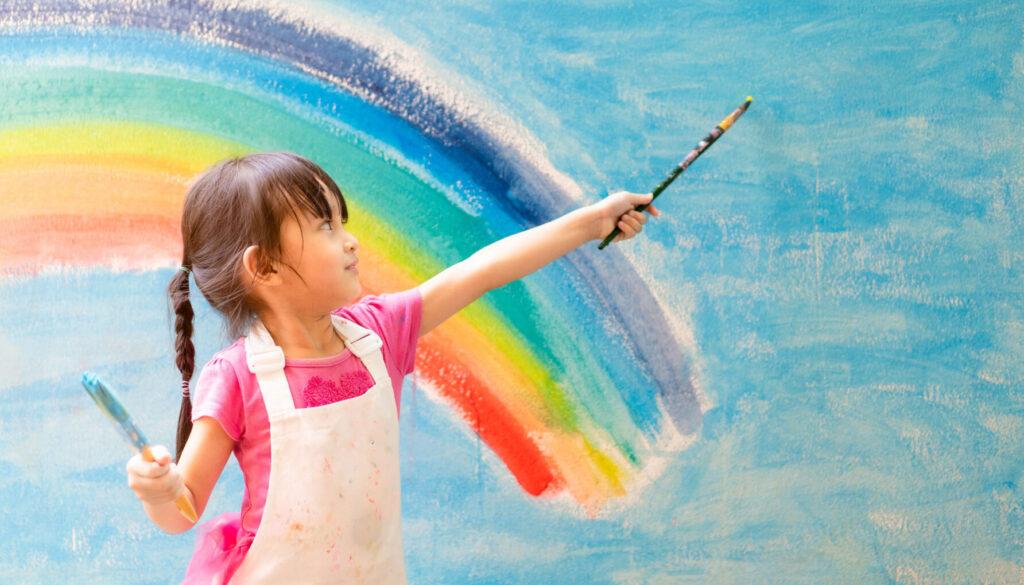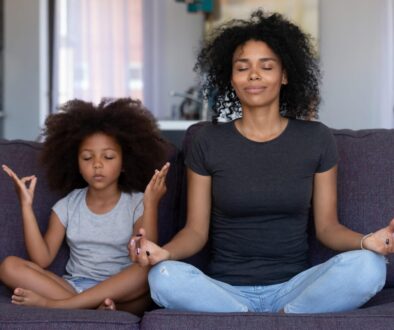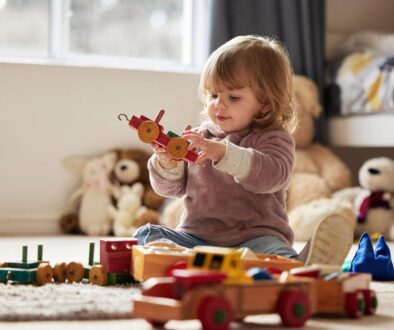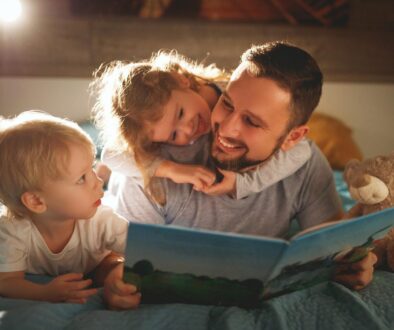Art and Healthy Child Development

As caregivers, we have the power to inspire our children to find their passions and welcome creativity into our homes. It is so important to provide a safe space for artistic exploration to promote healthy child development. Including art in your child’s day can be a wonderful way to foster creativity, imagination, and fine motor skills.
Here are some ways that art fosters creativity and promotes a healthy child development:
- Emotional expression and regulation: Art provides a powerful and safe outlet for children to express and process their emotions. Whether through painting, drawing, music, dance, or other artistic forms, art allows individuals to explore and communicate their feelings in a non-verbal and often freeing manner.
- Develops gross and fine motor skills: Art can help children improve their dexterity and coordination through its hands-on nature.
- Creativity and problem-solving skills: Engaging in art nurtures creativity, which is essential for problem-solving and innovative thinking. Artistic activities encourage individuals to think outside the box, explore different perspectives, and develop flexible thinking.
- Communication and social skills: Art can facilitate communication, particularly for individuals who struggle with verbal expression. Artistic activities provide alternative means of communication, enabling individuals to convey their thoughts, ideas, and experiences visually or through other artistic mediums.
- Self-esteem and self-confidence: Creating art and receiving positive feedback can boost self-esteem and self-confidence. Artistic pursuits allow individuals to develop a sense of accomplishment, pride, and personal satisfaction. The process of creating something unique and meaningful can foster a positive self-image and a belief in one’s abilities.
- Stress reduction and well-being: Engaging in art can serve as a form of stress relief and relaxation. Artistic activities promote mindfulness, focus, and a sense of flow, which can help individuals reduce anxiety, manage stress, and improve overall well-being.
Here are some ways to incorporate art into your child’s routine:
- Provide art supplies: Set up a designated art area with child-friendly art supplies such as crayons, washable markers, child-safe scissors, glue sticks, and finger paints. Make sure the materials are safe and age appropriate.
- Free drawing and coloring: Encourage your child to freely draw and color on blank paper. Offer a variety of colors and let them explore their creativity. Display their artwork proudly to celebrate their efforts.
- Sensory art activities: Introduce sensory-based art experiences, such as finger painting, playdough sculpting, or using textured materials like cotton balls or foam shapes. These activities engage multiple senses and stimulate your child’s imagination.
- Nature-inspired art: Take your child on nature walks to collect leaves, flowers, or rocks. Later, they can use these natural materials to create collages or paint with them. It’s a great way to connect with the environment and spark creativity.
- Music and dance: Combine art with music and movement. Encourage your child to draw or paint while listening to their favorite songs or create artwork inspired by the rhythms and beats.
- Parent-child art time: Engage in art activities together. Sit side by side and create art alongside your child. This not only provides bonding time but also allows them to observe and learn from your techniques and creativity.
Remember, art should be a fun and exploratory experience for children. Focus on the process rather than the outcome. Provide gentle guidance when needed, and always prioritize their safety by using age-appropriate materials and closely supervising their activities.





